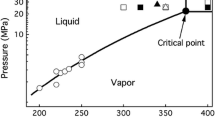Abstract
A series of microcrystalline cellulose samples were reacted with catalytic amounts of 2, 2, 6, 6-tetramethyl-1-piperidine oxoammonium salt (TEMPO), sodium hypochlorite and sodium bromide in Na2CO3/NaHCO3 buffer solution at different temperature (15 °C, 20 °C, 30 °C, 35 °C, 40 °C, 50 °C). The oxidation procedures included first and second oxidation. The first oxidation was a classical process for activating cellulose for the second oxidation. A substantial increase in the reactivity of the second oxidation cellulose samples was observed in comparison to those in the first oxidation and a relationship between oxidation procedures and accessibility of cellulose primary hydroxyl groups was directly established. For the characterization, we have used several methods, mainly XRD, FTIR. In all samples, the partial primary alcohol groups were selectively oxidized into carboxyl groups. The reaction during the first oxidation procedure mainly occurs in disordered regions of MCC and crystal surface. But the second oxidation procedure took place not only in disordered regions and crystal surface but inside crystalline region of cellulose I.
Similar content being viewed by others
References
M. Yalpani, Carbohyd. Res., 140, 61 (1985).
E. C. Yackel and W. O. Kenyon, J. Am. Chem. Soc., 64, 121 (1942).
T. P. Nevell, J. Text. Inst., 42, T191 (1951).
T. J. Painter, Carbohyd. Res., 55, 95 (1977).
A. E. De Nooy, A. C. Besemer, and H. Van Bekkum, Recl. Trav. Chim. Pays-Bas, 113, 165 (1994).
A. E. De Nooy, A. C. Besemer, and H. Van Bekkum, Carbohyd. Res., 269, 89 (1995).
A. E. De Nooy, A. C. Besemer, H. Van Bekkum, J. A. P. P Van Dijk, and J. A. M. Smit, Macromolecules, 29, 6541 (1996).
A. E. De Nooy, A. C. Besemer, and H. Van Bekkum, Tetrahedron., 51, 8023 (1995b).
P. S. Chang and J. F. Robyt, J. Carbohyd. Chem., 15, 819 (1996).
A. Isogai and K. Kato, Cellulose, 5, 153 (1998).
C. Tahiri and M. R. Vignon, Cellulose, 7, 177 (2000).
T. Saito and A. Isogai, Biomacromolecules, 5, 1983 (2004).
T. Saito, Y. Nishiyama, J. L. Putaux, M. Vignon, and A. Isogai, Biomacromolecules, 7, 1687 (2006).
T. Saito, S. Kimura, Y. Nishiyama, and A. Isogai, Biomacromolecules, 8, 2485 (2007).
L. Zhuo, S. Renneckar, and R. Barone Justin, Cellulose, 17, 57 (2010).
M. Rinaudo, La papeterie, 90, 479 (1968).
L. Dantas, A. Heyraud, J. Courtois, and M. Milas, Carbohyd. Polym., 24, 185 (1994).
D. Da Silva Perez, S. Montanari, and M. R. Vignon, Biomacromolecules, 4, 1417 (2003).
Y. Habibi and M. R. Vignon, Cellulose, 15, 177 (2008).
L. Einfeldt, W. Günther, D. Klemm, and B. Heublein, Cellulose, 12, 15 (2005).
T. Isogai, M. Yanagisawa, and A. Isogai, Cellulose, 15, 815 (2008).
T. Isogai, M. Yanagisawa, and A. Isogai, Cellulose, 16, 117 (2009).
A. Ishizu, J. Japan Tappi, 27, 371 (1973).
Y. Matsumoto, Asakura Press, Tokyo, 182–188 (2000).
I. Shibata and A. Isogai, Cellulose, 10, 151 (2003).
D. Da Silva Perez, S. Montanari, and M. R. Vignon, Biomacromolecules, 4, 1417 (2003).
Author information
Authors and Affiliations
Corresponding author
Rights and permissions
About this article
Cite this article
Li, L., Zhao, S., Zhang, J. et al. TEMPO-mediated oxidation of microcrystalline cellulose: Influence of temperature and oxidation procedure on yields of water-soluble products and crystal structures of water-insoluble residues. Fibers Polym 14, 352–357 (2013). https://doi.org/10.1007/s12221-013-0352-8
Received:
Revised:
Accepted:
Published:
Issue Date:
DOI: https://doi.org/10.1007/s12221-013-0352-8




